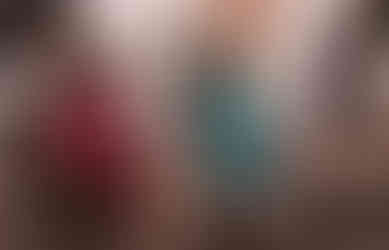Albright-Knox Internship: Multisensory Tours for the Visually Impaired
- Talia Ryan
- Aug 8, 2018
- 4 min read
Updated: Aug 13, 2018
Before embarking on my final year of grad school, I spent the summer interning at the Albright-Knox Art Gallery. I had the good fortune of being placed with the Accessibility and Community Programs Coordinator, within the Education Department. As such, I had hands-on experience with a number of programs and events (M&T First Fridays, the mobile Art Kart, School Tours, Docent Trainings, Creative Connections for adults with cognitive disabilities, Veterans Tours and Art-Making, to name several). However, it has been with the Multisensory Tours, that I have had the most creative input, and deeply meaningful involvement.
My supervisor is responsible for holding monthly Multisensory tours during the summer months. These tours, focus on one aspect of the art on-view, and are specially designed for those who are blind or have visual impairments. To conduct such a tour involves composing rich descriptions of the artworks, facilitating discussion, and providing tactile materials to supplement the process. Sometimes, it involves facilitating a gloved-touch of a sculptural piece, with the clearance of the museum registrar.
These tours are relatively new to the museum, and upon starting my internship, I was first tasked with researching what museums around the world are providing their guests, as far as programming and resources, for the visually impaired. This research was incredibly illuminating, as I found a vast wealth of innovative and interesting methods of making museum art accessible to all audiences. Among my most intriguing discoveries, were that the Prado has produced incredibly detailed, high contrast, 3D printed versions of some of the masterpieces in their collection, serving as topographical maps for visitors to feel. Some other museums use a range of sensual stimuli during their own multisensory tours, including fragrances and music, to supplement the discussion of a visual work. I compiled all that I found into a database, before receiving my next assignment, which was to create a tactile.
As a sighted individual, I had not considered what a visit to the Albright-Knox might be like for someone with a visual impairment. The upcoming tour was focusing on the Robert Indiana exhibition. My task, was to create two tactile pieces, to make the artworks discussed more accessible, and to round out the experience of them for the tour-goers. I spent some time mapping out the path we would take with my supervisor, and decided upon two pieces I felt would lend themselves well to this process. I decided on one of his herms, and one of his paintings. After photographing the pieces, doing some further research on them, and sketching out some designs so as to understand the proportions and symbols, I was given access to the supplies on hand, which were: cardboard, foam, plastics, cardstock, and wooden dowels. I then set about rendering models of Indiana's work with these materials.
I needed to consider textures, depth, and proportion in making these tactiles. I wanted to convey as much information as I could with the materials I had. It was intimidating at first, knowing that these portable models would play a huge role in the sensory input the guests would have in understanding the art objects. They would see these works of art, in part, by feeling my models with their hands. Despite my nerves over doing these works justice, I found that the process of studying them so closely, allowed me to get to know the works and the artist in a way far more intimate than I would have had access to otherwise. To make the experience even more rewarding, the tactiles were a success.
The guests were excited to feel something created especially for them. Those with partial vision said they noticed aspects of the artwork they were unaware of by looking at it. The guests with no vision enjoyed the experience as well, as they could feel the important motif of the gingko leaf in relief, and the stenciled letters. Later on, we all participated in a gloved touching of Indiana's "Love" sculpture, hewn in marble.
The next multisensory tour was scheduled for Giant Steps, an exhibition curated from the museum's collection highlighting artists and the 1960's. Once again, I started by walking through the tour, and deciding which pieces might benefit from a tactile component. What struck me most was an untitled sculpture by Donald Judd, consisting of ten uniform steel frame boxes, with orange Plexiglas in each. What I found most visually enticing about the piece was the way it was lit, creating an interesting pattern of shadows and reflections on the wall behind it. I knew that the guests, even those with partial vision, would likely be unable to discern these shadows; and felt they would be best described through feeling them, rather than verbally describing the patterns. I set about making a tactile in the same process as the first.
The group spent an extended period of time discussing this work, and passing my tactile around. They were so interested in how the shadows were being formed on the wall, and how the lighting might change the entire piece. I was deeply moved as one woman, blind from birth, ran her fingers over the smooth, raised shadows I had cut from plastic, and said "I have never seen shadows before; but I can feel them here".
My time spent as an intern in this museum has been not only educational, but extremely gratifying and enjoyable. I did not anticipate being tasked with such interesting assignments, which have awarded me invaluable experience in understanding art and making it accessible.
































Comments